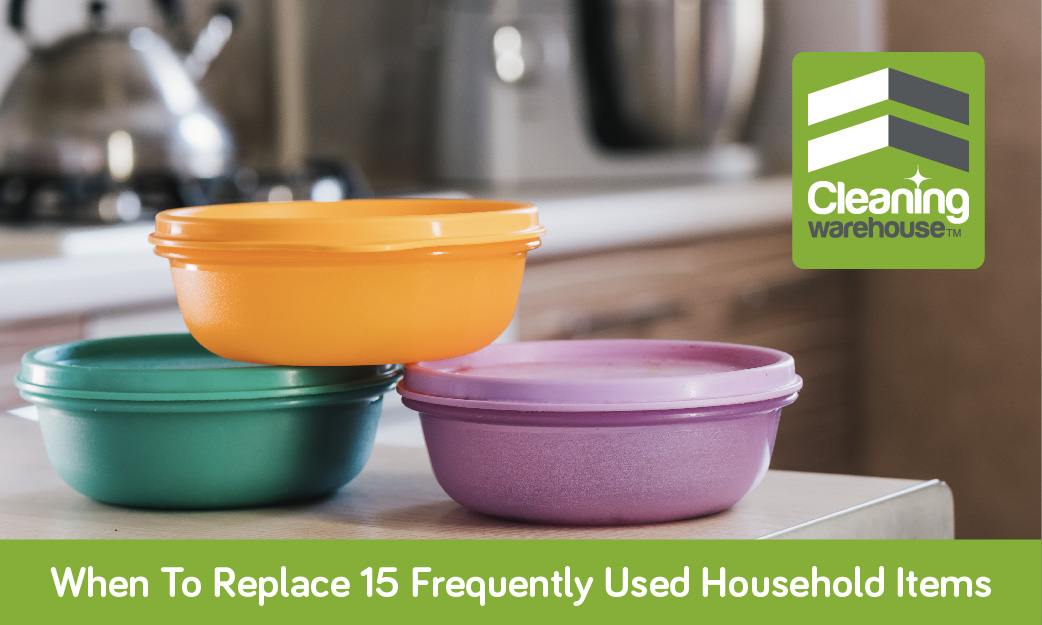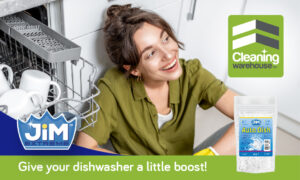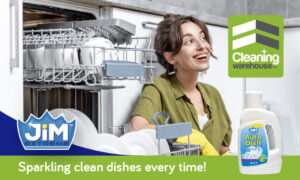
When To Replace 15 Frequently Used Household Items
We’ve adopted a cleaning culture. We disinfect, soak, launder, handwash, dry clean or deep clean pretty much anything and everything in and around the home. But when last have you really looked at some of the things you wash and reuse?
Like the socks you’ve been wearing for years…that set of bath towels…your favourite pillow…?
Sometimes cleaning it isn’t the most hygienic option, but throwing it out is.
So when is enough, enough?
Here’s when to call quits on the following household things:
1. Kitchen sponges
Replace weekly.
Kitchen sponges are bacteria magnets. Even antibacterial ones should be replaced after a week of use.
2. Dishcloths
Replace every one to two months (or sooner if they smell).
Dishcloths are must-haves in the kitchen and can go a long way but once they hold onto odours or start to fall apart, it’s time for the bin.
3. Plastic Cutting Boards
Replace every one to five years or when stains cannot be removed anymore or deep knife marks appear.
Deep grooves trap bacteria, especially after raw meat. Consider replacing with glass cutting boards.
4. Kitchen Towels
Replace every few months.
Kitchen towels don’t live forever. If yours are stained, frayed, or have a damp smell – throw them out.
5. Plastic Food Containers
Replace every one to five years or when stained, disformed or smelly.
Cleaning can’t fix aged plastic that’s absorbed food smells.
6. Reusable Water Bottles
Replace every six to 12 months or when they retain odour.
Hidden mould and bacteria can grow under lids, seals, or in hard-to-reach parts, especially bottles with straws. If it smells strange or mould keeps returning, it’s time for a new one.
7. Toothbrushes
Replace every three months.
A single toothbrush can contain up to 10 million bacteria, including E. coli and Staphylococcus, if not cleaned and stored properly. Replace every three months or when bristles are worn.
8. Hairbrushes
Replace annually or when bristles are missing or bent or when there’s a lingering smell.
Dirty hairbrushes can transfer oil, dead skin, product build-up, and bacteria back onto your clean hair, which can lead to greasiness and scalp irritation.
9. Toilet Brushes
Replace annually.
Toilet brushes are key to a clean loo, but eventually, they hold onto more grossness than they remove.
10. Body Sponges
Replace every two months.
Sponges exfoliate and cleanse, but they also trap dead skin cells and moisture. This can become a breeding ground for bacteria if left too long.
11. Mop Heads
Replace every three months.
Washable mop heads wear out and hold bacteria. If it’s stained, smells, or fraying, it’s time.
12. Pillows
Replace every three years if you use a protector, sooner if you don’t.
Even with pillow protectors and regular washing, pillows collect sweat, dead skin cells, dust mites, and allergens. If your pillow doesn’t bounce back when folded or smells funny, it’s time for a new one.
13. Fabric Laundry Hamper Liner
Replace every two years.
Dirty clothes carry bacteria, and fabric-lined laundry hampers absorb sweat and odours. Wash the liner regularly and replace it if it starts to smell or look stained.
14. Underwear & Socks
Replace the ones you wear weekly after 12 months.
These items are in close contact with sweat and bacteria. Even with regular washing, elastic breaks down and hygiene fades. Say goodbye if they’re faded, stretched, or have holes.
15. Phone Cases
Replace annually.
Bacteria from your hands and surfaces are transferred to phone cases and can get trapped in crevices. If it’s discoloured, sticky, cracked, or can’t be cleaned properly get a new one.
The secret to a healthier, cleaner home isn’t just what you clean with but how often you replace it.



